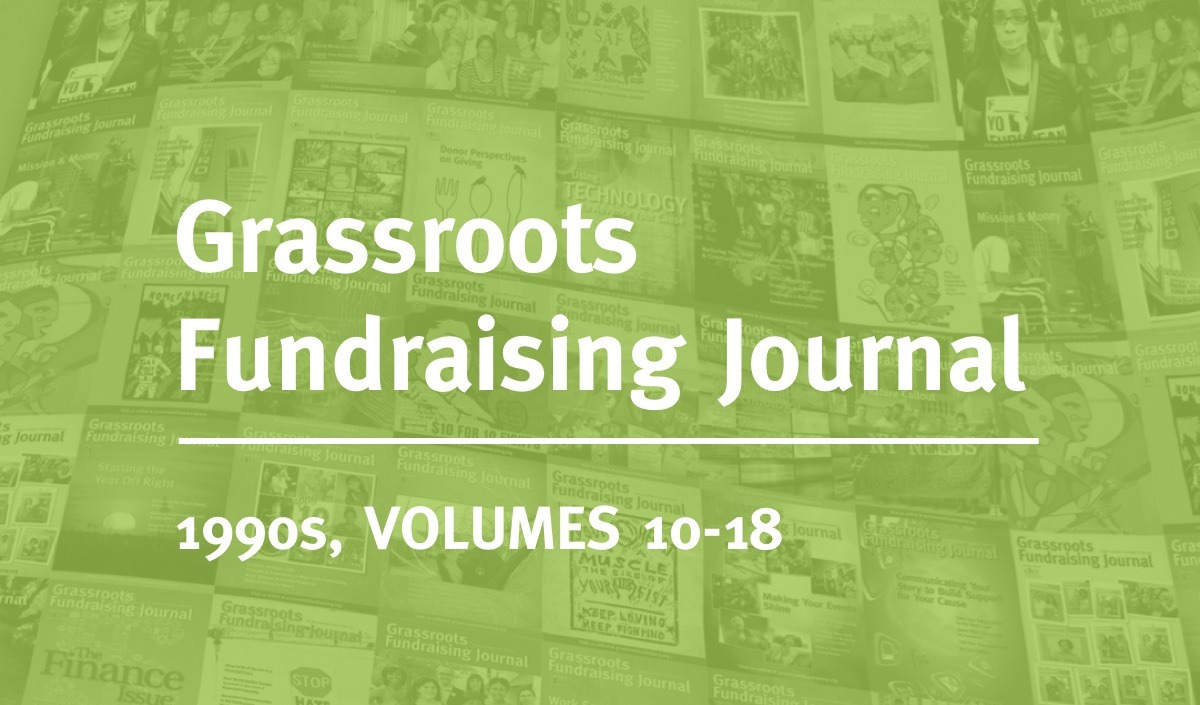
Editors’ note: This article, first published in print during February-1993, has been republished for Nonprofit Quarterly with minor updates.
Many mail appeals fail because, although much attention has been spent writing an effective letter, it is enclosed in an envelope that no one opens.
Mail appeals are called “packages” because they are more than letters in an envelope. The entire unit consists of the letter, the return form and return envelope, and the outside envelope in which the contents are sent. Each is an important part of the package.
Personal and business mail that is sent first class can arrive in a plain envelope with little doubt that the person receiving the letter will open it. In the case of first-class mail, the envelope is simply a convenient way to carry the message.
In a fundraising appeal sent by bulk mail, however, the outside envelope has an entirely different purpose. It must grab the prospect’s attention and then intrigue them enough that they want to open it and see what’s inside. The envelope in this case is like gift wrapping. Everyone wants to know what’s inside a present. In fact, gift wrapping works so well that even when you know what a gift is, the wrapping still provides the thrill of discovery in opening it.
That thrill and that curiosity is what you should strive for with mail appeals. Your job is to make the prospect want to know what is inside the envelope.
There are many ways to entice someone to open an envelope; different ways will be effective with different audiences. For the purposes of this article, we will concentrate on the effective use of an outside envelope for small mail appeals (200–5,000 pieces) sent by bulk mail to new prospects.
GETTING PERSONAL
The main idea is to make the envelope look as if it contains a personal letter. There are two ways to make that happen: Make the envelope look as if it was sent by first-class mail, or make it different from other mail appeals the prospect will be receiving.
Sign up for our free newsletters
Subscribe to NPQ's newsletters to have our top stories delivered directly to your inbox.
By signing up, you agree to our privacy policy and terms of use, and to receive messages from NPQ and our partners.
The methods you choose to accomplish this purpose will depend on how many volunteers you have to help with the mailing, your judgment about whether this is the best use of volunteer time, how many pieces you are actually sending, and your goal for the mailing.

Look First Class
The best way make a mail appeal look as if it came first class is to write the address by hand. If you have an appeal going to fewer than 1,000 names, this is not too arduous a task.
In addition to or instead of handwriting the address, you can use a precanceled bulk-mail stamp in place of the common postal indicia. These stamps may be purchased at the post office where you send your bulk mail. The rules for sorting and handling the mail are the same as for any other bulk mailing. Sometimes the presence of an actual stamp will make the piece look more important.
Consider the rest of the envelope. If you are in a major metropolitan area where a lot of mail appeals originate, don’t put your name and return address in the upper-left hand corner of the front of the envelope. Either use only your address without your organization’s name in that space, or put the name and address on the back flap of the envelope. In either case, the prospect asks, “Who is this from?” and opens the envelope to find out.
On the other hand, if you are in a rural area, it is likely that the people receiving your mail will open all letters that originate in their county or small town. In that case, you want your return address to be fairly prominent on the front of the envelope. 
Look Different
Most mail envelopes are sent in standard business-size envelopes (called No. 10). Your appeal will stand out if it arrives in a smaller or an odd-sized envelope. Personal letters are not generally sent in business-size envelopes, so to make your appeal look more personal, send it in a No. 6 or No. 7 envelope, or in an invitation-style envelope. One word of caution: If you use smaller envelopes, make sure your return envelope is smaller yet, so that it will fit into the carrier envelope without needing to be folded. Also, letters that must fit into smaller envelopes may be more expensive to print.
The least effective method of gaining attention is “teaser copy.” However, this strategy should not be totally disregarded. “Teaser copy” involves including a phrase, a drawing, or using a photograph on the envelope itself, which intrigues the reader or causes some emotional response that will make them open the envelope. So many direct mail appeals use this strategy now that it will not make your envelope stand out unless the teaser is very unusual. The examples below show the most common uses of teaser copy.
You may wish to experiment with various styles of outside envelopes to find which methods work best for your organization. Save mail appeals from other groups that you open, and figure out what it is about the envelope that caused you to open it. The more creative you can be in getting the recipient to open the outside envelope, the greater chance you will have of the prospect reading your appeal. 









